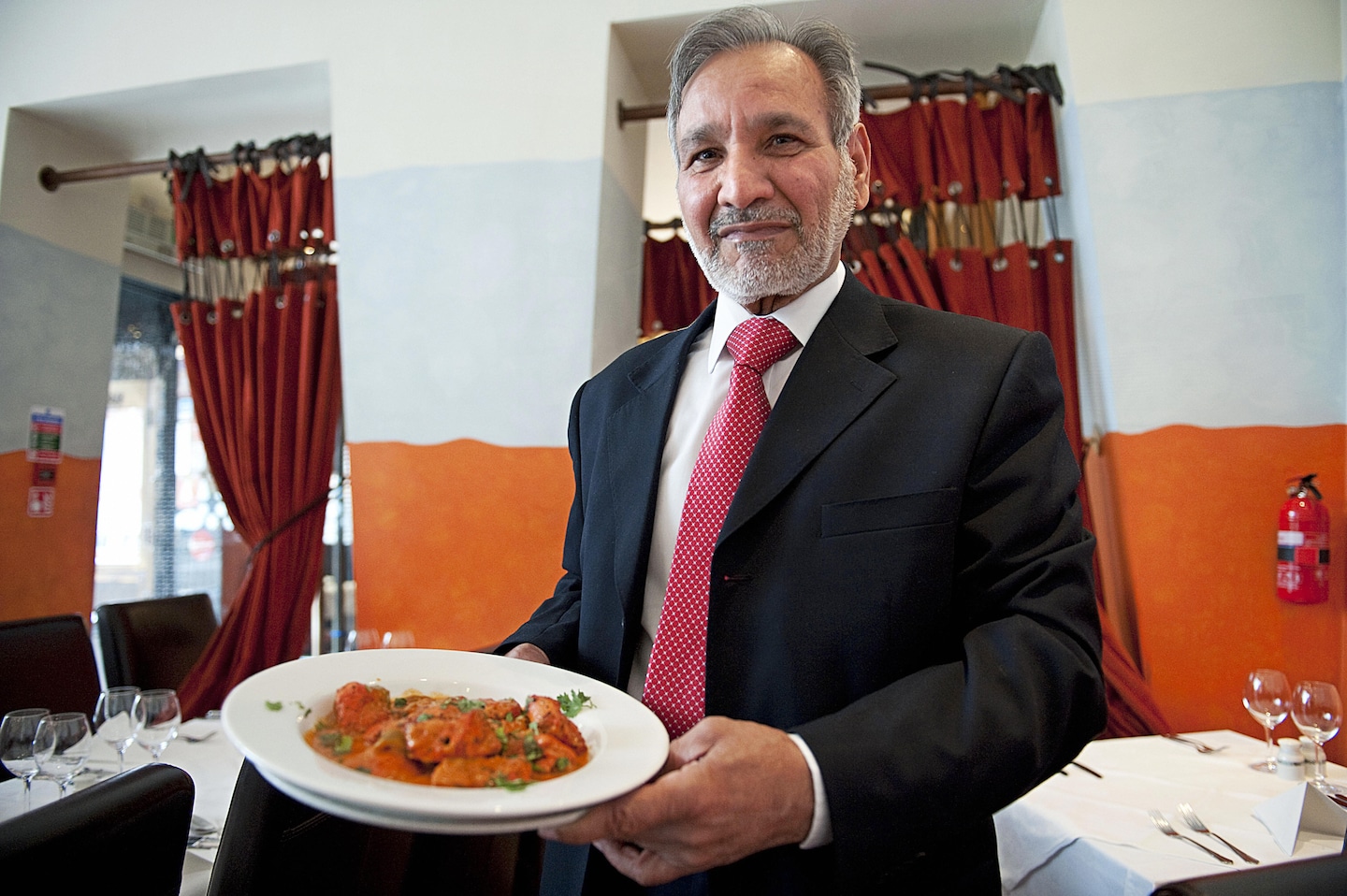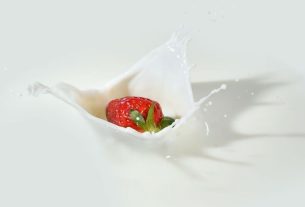[ad_1]
Hundreds of tributes poured in for Mr. Ali, as he was popularly known in Glasgow, where his restaurant Shish Mahal was founded in 1964. Customers recalled him as a “gentleman” who dished out mouthwatering curries.
Born in Pakistan, Aslam moved to Glasgow at the age of 16, ultimately emerging as a star of the city’s Indian cuisine scene, according to one review. Ali told The Post that his father came from a very poor background and worked hard to create a better life for his family. “He was a simple man. He loved dal and vegetables,” Ali said.
Chicken tikka masala is similar to Indian butter chicken, with a creamy tomato sauce. In tikka masala, boneless chicken is marinated in yogurt and then roasted in a tandoori oven.
Shish Mahal says Aslam came up with the chicken tikka masala recipe by accident in the early 1970s, after a customer complained that the chicken tikka was too dry. Aslam pulled together a quick curry sauce with spices and a can of Campbell’s tomato soup, which he had been eating while suffering a stomach ulcer.
For many, Shish Mahal became synonymous with the dish. When Lonely Planet featured chicken tikka masala as part of a recipe book on the world’s best spicy food, it noted Aslam’s story.
In 2009, in a nod to Aslam’s claim, Mohammad Sarwar, a Labour member of Parliament for Glasgow Central, campaigned for the city to be recognized as the home of the chicken tikka masala. While the bid failed, Aslam’s contribution as the inventor was noted in the resolution.
“Glaswegians loved the flavor of Asian spices but still wanted a bit of gravy on their meat. The Shish Mahal pioneered great Asian food with a Glasgow twist,” Sarwar told the BBC at the time.
However, not everyone agrees, and the origin of the dish remains contested among historians.
Peter and Colleen Grove, experts on the history of Indian food in Britain, called the dish the “Cinderella” of culinary creations, given its enigmatic origins. In a piece in 1994 for Menu magazine, they concluded that the dish was “most certainly” invented in Britain to suit a Western palate, probably by a Bangladeshi chef.
A similar recipe, which some food historians believe to be a prototype for the chicken tikka masala, is found in “Mrs. Balbir Singh’s Indian Cookery,” an acclaimed cookbook published in 1961 by an Indian chef.
For food and culture writer Leena Trivedi-Grenier, chicken tikka masala is essentially the same as butter chicken, and is said to have been created by a Pakistani refugee, Kundan Lal Gujral, who moved to India during its partition at the end of British colonial rule.
Rana Safvi, a food and culture historian in India, told The Post that food from the Mughal dynasty, which ruled the country between the 16th and mid-18th centuries, had undergone several such innovations.
“Just as the famous kakori kebab,” a northern Indian delicacy, “was invented because some British officer considered seekh kebab too chewy, the chicken tikka masala was invented for a customer who found the tikka too dry in U.K.,” she said.
Regardless of its origin, the dish came to represent the multicultural British identity. Foreign Secretary Robin Cook called the dish a “perfect illustration” of how the country adapted to external influences.
“Chicken tikka is an Indian dish. The masala sauce was added to satisfy the desire of British people to have their meat served in gravy,” he said in a 2001 speech.
Hundreds of chicken tikka masala fans noted Aslam’s starring role.
One fan on Twitter said he was “more important than Edison.”
It’s the “best dish ever created and RIP to this absolute food god,” wrote another.
[ad_2]
Source link



